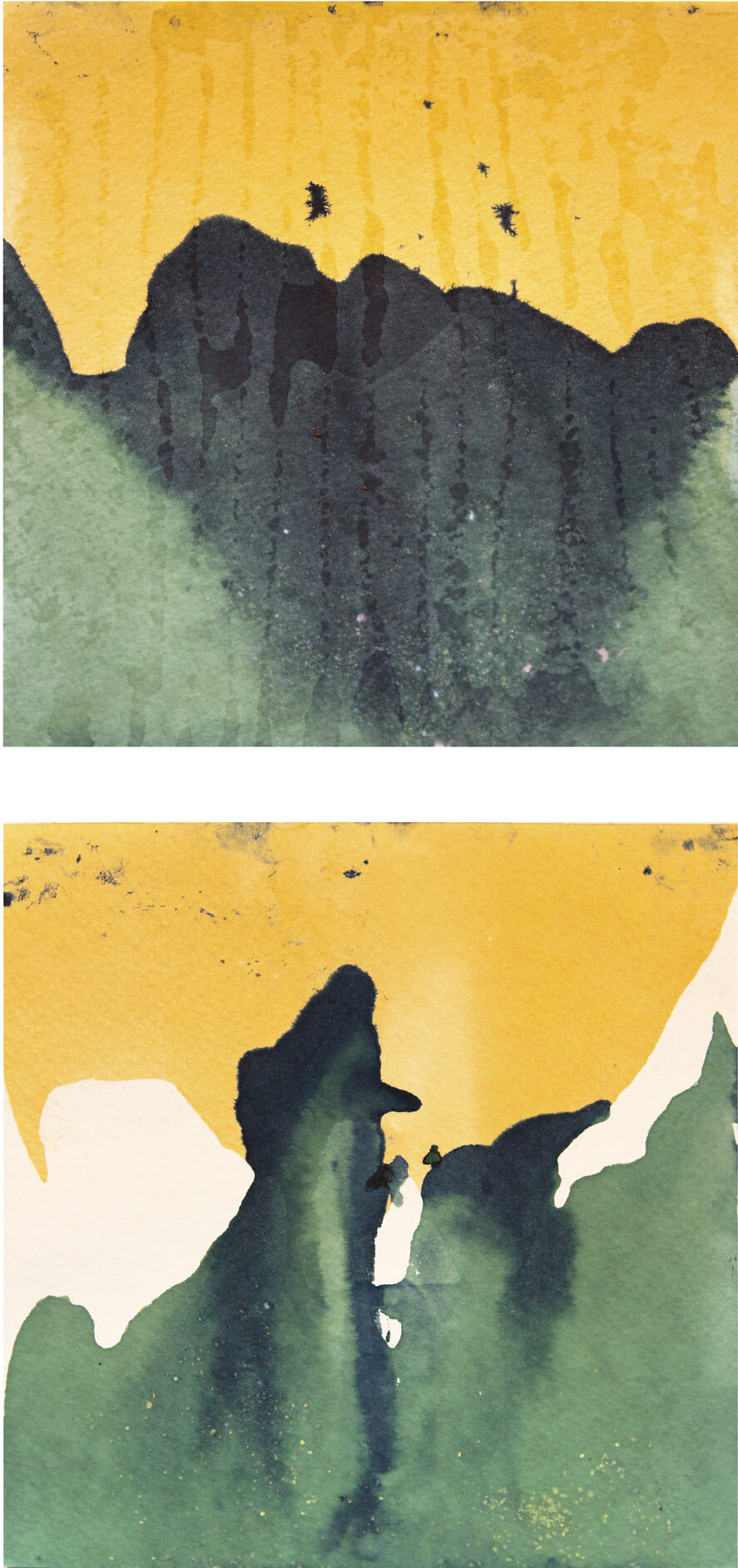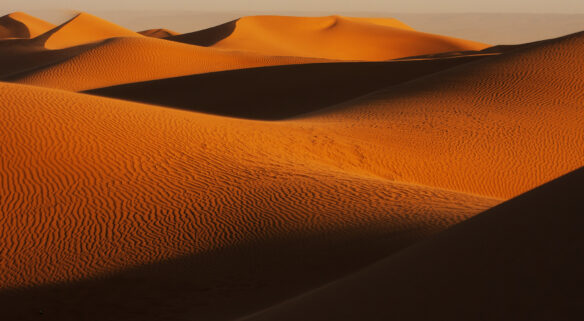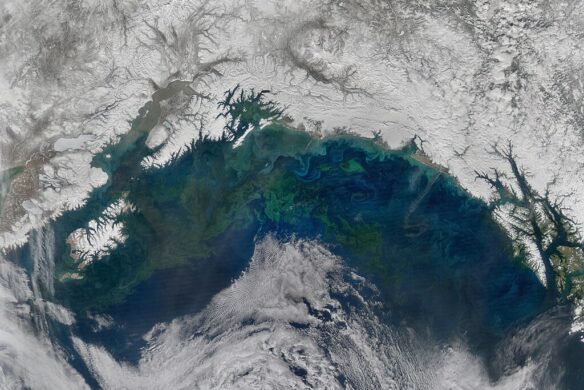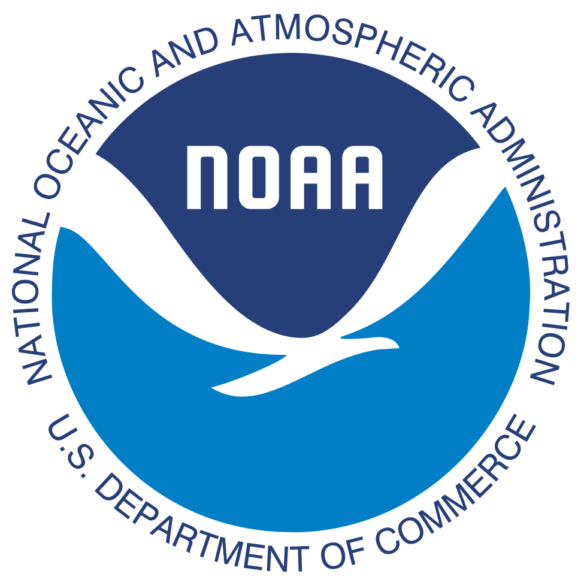Excerpt:
Letting nature run its course into her working process, Meghann Riepenhoff’s breathtaking Cyanotypes are made in collaboration with the sea.
Inky blues, frothy whites and occasional flecks of gold make up the color spectrum in Meghann Riepenhoff’s breathtaking camera-less cyanotypes. Some still, some more dynamic and animated, her abstract prints capture the many moods of the mysterious and powerful force of nature that helped to create them: the ocean. Littoral Drift—a geological term used to describe the transportation of sand and gravel by wind-driven waves—is Riepenhoff’s “collaboration” with the landscape and the ocean, in which she opens herself to chance and embraces the textures of nature into her working process.
Invented in 1842 by the English astronomer and photographic pioneer Sir John Herschel, the Cyanotype produces Prussian blue tones made by coating paper with an iron-salt solution, exposing it to light then washing it in water. Since its inception, many photographers over the years have used this process to explore their curiosity, most notably the botanist and photographer Anna Atkins, whose beautiful studies of nature made use of the direct contact between natural forms and the resulting photographic print. Taking it to the extreme, Riephenhoff’s equally curious contemporary work strips photography back to its basics using only sun, salt and water to create her abstract, large-scale Cyanotypes. Coating huge sheets of paper with homemade Cyanotype emulsion, Riepenhoff plunges her blank canvases directly into the landscapes she is interested in.
Submerging pieces of photosensitive paper into the ocean, Riepenhoff’s images bear the movement of the sea and extraordinary patterns of the sand, salt and seaweed contained within it. In her statement, the photographer comments: “The elements that I employ in the process—waves, rain, wind, and sediment—leave physical inscriptions through direct contact with photographic materials.” From allowing fierce, violent waves to crash onto the paper to letting the shorelines’ ebbs and flows tenderly caress it, Riepenhoff works with unpredictability of the elements to create a raw and physical impression of nature…
MEGHANN RIEPENHOFF AT HAINES GALLERY SAN FRANCISCO | Eric Minh Swenson Art Films (January 24, 2022)
A film by Eric Minh Swenson. EMS Legacy Films is a continuing series of short films produced by EMS on artists and exhibitions.









